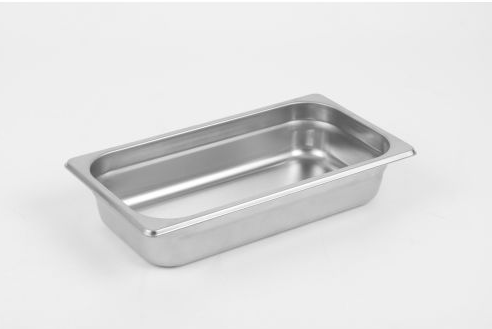It’s generous, it’s hospitable and it sets the scene – there’s no doubt that the buffet is back when it comes to serving food, from corporate settings and banquet-style hotel set-ups to conferences and award ceremonies. The appeal of a table laden with a variety of food has been an enduring mainstay in culinary tradition, often associated with the act of communal eating and the connectedness of sharing a feast with others.
For commercial catering operations or major hotels that offer buffet dining, the visual impact of a well stocked and beautifully styled buffet – especially on entry – is most striking. When done well, a buffet can act as an aesthetic centrepiece and creates a kind of wow factor. If guests arrive, get a drink, and within eyesight is a generous amount of food, they tend to think, ‘we’re going to be looked after here’.
Contemporary buffets have evolved from traditional feasts of celebration in ancient times to embody more of the currently trending grazing table set-up and that ever-popular breakfast buffet. From tempting continental delights to eggs any style, artisan breads, and an amazing health section with its own juicer, according to Sean Slattery, Hotel Manager of Mövenpick Hotel Auckland, buffets should try to cater to every palate.
“A good breakfast buffet should offer a broad spectrum of dishes catering to diverse palates and dietary needs. The quality of the ingredients and the skill of the preparation are crucial. Dishes should be fresh, flavourful, and cooked to perfection – but most of all, there should be something for everyone. We offer all your usual breakfast staples, but add little surprises like traditional Korean breakfast items and a weekend waffle station to ensure there’s something all guests will enjoy.”
“Dishes should be fresh, flavourful, and cooked to perfection – but most of all, there should be something for everyone.”
Sean Slattery, Hotel Manager of Mövenpick Hotel Auckland
While buffet service will generally require less waitstaff, it’s important to have staff dedicated to keeping the food replenished and make sure it presents well during service. For corporate functions, it’s better to serve a smaller amount at the start and add to the selection throughout to make sure the presentation is always at its best.
As most commercial caterers know, any large event also requires a certain amount of logistical planning to ensure guests are never left waiting – something buffets can work well for. “Organising a successful buffet service involves meticulously planning across various areas like ordering, prep, and staffing – it’s quite a balancing act. By managing these considerations, you can set the stage for a memorable buffet experience for your guests. It’s all about striking a balance between variety, quality, efficiency, and a welcoming atmosphere,” says Slattery.
According to Director of event company Gallivant Group, Timothy Brennan, “There’s a little bit more logistics involved in the back end of getting the food up, but you’d have the same kind of logistics if you were doing à la carte. So, it can make it a lot easier logistically and budget-wise.”
Another advantage of serving produce buffet-style is the experience you bring to the table. The layout of a buffet – allowing for guests to move in and around the feast – encourages people to mingle and interact, an ideal aspect for corporate settings when networking is imperative.
The appeal of buffets and banquets remains its unique ability to fostering a sense of abundance while providing a communal dining experience for your guests.
